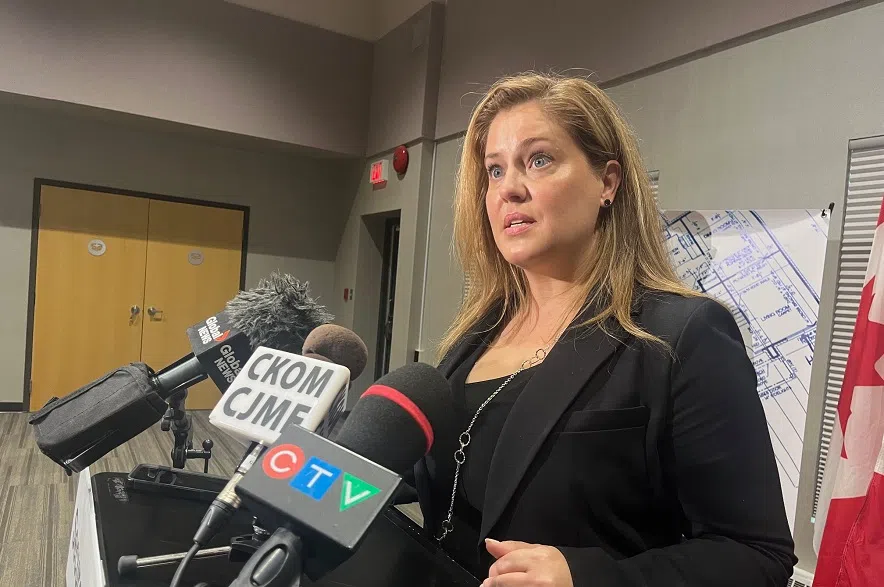Saskatchewan needs 60,000-80,000 new housing units by 2030 to keep up with the growth the province is seeing.
That’s according to a report put forward by the Saskatchewan Housing Continuum Network with data supported by Canada’s Mortgage and Housing Corporation.
On Monday, housing providers released a blueprint titled “Secure Homes, Strong Future” for the provincial government and fall election candidates to consider when looking at these issues.
CEO of the Saskatchewan Realtors Association Chris Guérette said housing challenges are being felt at different levels.
Whether it be rising home prices and record inventory lows (that have not been seen since 2007 in some cases) or the rental market with vacancy rates lower than one per cent in the province’s largest centers, Guérette said.
“Our provincial government has a growth plan to target 1.4 million residents by 2030,” she said. “A plan for growth cannot exclude bringing more housing to market.”
Stu Niebergall, CEO of Regina & Region Home Builders’ Association added addressing these issues begins with enhancing affordability and reducing housing costs.
Reduce PST and keep rebates
One of the report’s recommendations is to reduce PST from six to four per cent on new construction and maintain the current rebate from 2020 on new construction.
The current rebate is for construction in 2023 for newly built homes that have a price of $550,000 with the rebate providing a partial refund of up to 42 per cent of the PST paid.
Niebergall said during the pandemic the provincial government also introduced a home renovation tax credit to spur economic activity and construction jobs that was only available for expenses from 2020-2022.
He noted the success of the program and recommended the province reintroduce that tax credit.
Furthermore, Niebergall said with seniors making up 17 per cent of the province’s population, a tax credit should be introduced allowing them to renovate their homes for functionality and accessibility.
The report also suggests the province’s secondary suite incentive be permanent. This program provides homeowners a grant for up to 35 per cent of the cost to construct a secondary suite to a primary residence.
Niebergall called it “a win-win at a time where housing is needed more than ever.”
More help for municipalities, tenants, and landlords
“We’ve seen in other provinces that once affordability is eroded, it can be very difficult to correct course,” said Nicole Burgess, CEO of Saskatoon & Region Home Builders’ Association.
Housing providers are calling on the government to conduct a province-wide audit of underused government-owned buildings and land that can be used to create new houses, Burgess noted this has seen success in cities like Calgary and Edmonton.
Burgess added there should also be greater guidance and support from the province to municipalities when it comes to infill development and supporting infrastructure that’s necessary to enable housing and growth.
“The reality is municipalities are under significant pressure to accommodate a growing province,” she said.
Cameron Choquette, CEO of the Saskatchewan Landlord Association also stressed the importance of supporting rental housing providers and protecting tenants.
The blueprint recommends increasing funding for additional hearing officers, deputy directors and support staff so that tenants and landlords can have timely access to “justice” with issues such as rent disputes.
Choquette also pointed to a poll highlighted in the report stating that seven in 10 Saskatchewan residents are concerned about the issue of housing affordability, and 66 per cent believe the province should make it a top priority.
“While Saskatchewan currently offers some of the most affordable housing costs across the country, we can’t be complacent,” Choquette, noting that unless fundamental changes are made demand for housing will not taper off.











